GIS-Based Optimum Geospatial Characterization for Seismic Site Effect Assessment in an Inland Urban Area, South Korea
Abstract
:1. Introduction
2. Interactive Geospatial Database and Data
3. Geospatial Informatics of the Geotechnical Database
3.1. Optimization of the Geotechnical Database
3.2. Hot Spot Analysis of the Geotechnical Database
3.3. Geospatial Interpolation
4. Multilayered Local Zonation of Seismic Site Effects
4.1. Site Response Parameters and Classification
4.2. Multilayered Local Zonation
5. Conclusions
Author Contributions
Funding
Acknowledgments
Conflicts of Interest
References
- Selim, S.; Koc-San, D.; Selim, C.; San, B.T. Site selection for avocado cultivation using GIS and multi-criteria decision analyses: Case study of Antalya, Turkey. Comput. Electron. Agric. 2018, 154, 450–459. [Google Scholar] [CrossRef]
- Atkinson, P.M.; Foody, G.M. Uncertainty in Remote Sensing and GIS: Fundamentals; John Wiley & Sons: Hoboken, NJ, USA, 2006; pp. 1–18. [Google Scholar]
- Kim, H.-S.; Chung, C.-K. Integrated system for site-specific earthquake hazard assessment with geotechnical spatial grid information based on GIS. Nat. Hazards 2016, 82, 981–1007. [Google Scholar] [CrossRef]
- Wang, Y.; Cao, Z.; Li, D. Bayesian perspective on geotechnical variability and site characterization. Eng. Geol. 2016, 203, 117–125. [Google Scholar] [CrossRef]
- Zhu, H.; Zhang, L.M. Characterizing geotechnical anisotropic spatial variations using random field theory. Can. Geotech. J. 2013, 50, 723–734. [Google Scholar] [CrossRef]
- Whitman, R.V. Evaluating Calculated Risk in Geotechnical Engineering. J. Geotech. Eng. 1984, 110, 143–188. [Google Scholar] [CrossRef]
- Phoon, K.K.; Kulhawy, F.H. Characterization of geotechnical variability. Can. Geotech. J. 1999, 36, 612–624. [Google Scholar] [CrossRef]
- Baecher, G.B.; Christian, J.T. Evaluating site investigation quality using quality GIS and geostatistics. J. Geotech. Geoenviron. 2003, 129, 451–461. [Google Scholar] [CrossRef]
- Clayton, C.R.I.; Steinhagen, H.M.; Powrie, W.; Terzaghi, K.; Skempton, A.W.; Steinhagen, M. Terzaghi’s theory of consolidation, and the discovery of effective stress. Proc. Inst. Civ. Eng. Geotech. Eng. 1995, 113, 191–205. [Google Scholar] [CrossRef]
- Mayne, P.W.; Christopher, B.R.; DeJong, J. Subsurface Investigations—Geotechnical Site Characterization; National Highway Institute: Washington, DC, USA, 2002; No. FHWA NHI-01-031. [Google Scholar]
- Baker, V.R. Urban geology of boulder, colorado: A progress report. Environ. Earth Sci. 1975, 1, 75–88. [Google Scholar] [CrossRef]
- Akpokodje, E.G. The importance of engineering geological mapping in the development of the niger delta basin. Bull. Int. Assoc. Eng. Geol. 1979, 19, 101–108. [Google Scholar] [CrossRef]
- Edbrooke, S.W.; Mazengarb, C.; Stephenson, W. Geology and geological hazards of the Auckland urban area, New Zealand. Quat. Int. 2003, 103, 3–21. [Google Scholar] [CrossRef]
- Haworth, R. The shaping of Sydney by its urban geology. Quat. Int. 2003, 103, 41–55. [Google Scholar] [CrossRef]
- Nott, J. The urban geology of Darwin, Australia. Quat. Int. 2003, 103, 83–90. [Google Scholar] [CrossRef]
- Özsan, A.; Öcal, A.; Akın, M.; Basarir, H. Engineering geological appraisal of the Sulakyurt dam site, Turkey. Bull. Int. Assoc. Eng. Geol. 2007, 66, 483–492. [Google Scholar] [CrossRef]
- Kim, H.S.; Kim, H.K. Optimizing site-specific geostatistics to improve geotechnical spatial information in Seoul, South Korea. Arab. J. Geosci. 2019, 12, 104. [Google Scholar] [CrossRef]
- Borruso, G. Network Density Estimation: Analysis of Point Patterns over a Network. In International Conference on Computational Science and Its Applications; Springer: Berlin/Heidelberg, Germany, 2005; Volume 3482, pp. 126–132. [Google Scholar]
- Sun, C.-G.; Kim, H.-S.; Cho, H.-I. Geo-Proxy-Based Site Classification for Regional Zonation of Seismic Site Effects in South Korea. Appl. Sci. 2018, 8, 314. [Google Scholar] [CrossRef] [Green Version]
- Kim, H.-S.; Sun, C.-G.; Cho, H.-I. Geospatial Assessment of the Post-Earthquake Hazard of the 2017 Pohang Earthquake Considering Seismic Site Effects. ISPRS Int. J. Geo Information 2018, 7, 375. [Google Scholar] [CrossRef] [Green Version]
- Sun, C.G. Geotechnical information system and site amplification characteristics for earthquake ground motions at inland of the Korean peninsula. Ph.D. Thesis, Seoul National University, Seoul, Korea, 2004. [Google Scholar]
- Sun, C.-G.; Kim, H.-S.; Chung, C.-K.; Chi, H.-C. Spatial zonations for regional assessment of seismic site effects in the Seoul metropolitan area. Soil Dyn. Earthq. Eng. 2014, 56, 44–56. [Google Scholar] [CrossRef]
- Sun, C.-G.; Kim, H.-S. GIS-based regional assessment of seismic site effects considering the spatial uncertainty of site-specific geotechnical characteristics in coastal and inland urban areas. Geomat. Nat. Hazards Risk 2017, 8, 1592–1621. [Google Scholar] [CrossRef] [Green Version]
- Chough, S. Tectonic and sedimentary evolution of the Korean peninsula: A review and new view. Earth Sci. Rev. 2000, 52, 175–235. [Google Scholar] [CrossRef]
- Hwang, J. Occurrence of U-minerals and Source of U in Groundwater in Daebo Granite, Daejeon Area. J. Eng. Geol. 2013, 23, 399–407. [Google Scholar] [CrossRef] [Green Version]
- Digital Elevation Model. Available online: http://map.ngii.go.kr/ (accessed on 20 March 2020).
- Geological Map. Available online: https://mgeo.kigam.re.kr/ (accessed on 10 March 2020).
- Borehole Dataset. Available online: https://www.geoinfo.or.kr/ (accessed on 10 November 2019).
- Kim, M.; Kim, H.-S.; Chung, C.-K. A Three-Dimensional Geotechnical Spatial Modeling Method for Borehole Dataset Using Optimization of Geostatistical Approaches. KSCE J. Civ. Eng. 2020, 24, 778–793. [Google Scholar] [CrossRef]
- Vieux, B.E. Distributed Hydrologic Modeling Using GIS. In Distributed Hydrologic Modeling Using GIS; Springer: Dordrecht, The Netherlands, 2001; pp. 1–17. [Google Scholar]
- Chainey, S.P.; Tompson, L.; Uhlig, S. The Utility of Hotspot Mapping for Predicting Spatial Patterns of Crime. Secur. J. 2008, 21, 4–28. [Google Scholar] [CrossRef]
- Chakravorty, S. Identifying crime clusters: The spatial principles. Middle States Geograph. 1995, 28, 53–58. [Google Scholar]
- Kulhawy, F.H. Some thoughts on the evaluation of undrained shear strength for design. In Proceedings of the Wroth Memorial Symposium, St Catherine’s College, Oxford, UK, 27–29 July 1992; pp. 394–403. [Google Scholar]
- Ansari, K.; Park, K.-D.; Panda, S.K. Empirical Orthogonal Function analysis and modeling of ionospheric TEC over South Korean region. Acta Astronaut. 2019, 161, 313–324. [Google Scholar] [CrossRef]
- American Associatino State. ASTM E8 Standard Test Method for Tension Testing of Metallic Materials; ASTM: West Conshohocken, PA, USA, 2004; pp. 44–46. [Google Scholar]
- Grubbs, F.E. Procedures for detecting outlying observations in samples. Technometrics 1969, 11, 1–21. [Google Scholar] [CrossRef]
- Barnett, V.; Lewis, T. Outliers in Statistical Data; John Wiley and Sons: New York, NY, USA, 1994; pp. 56–71. [Google Scholar]
- Vanmarcke, E.H. Probabilistic modeling of soil profiles. J. Geotech. Eng. Div. Am. Soc. Civ. Eng. 1977, 103, 1227–1246. [Google Scholar]
- Anselin, L. Local Indicators of Spatial Association-LISA. Geogr. Anal. 2010, 27, 93–115. [Google Scholar] [CrossRef]
- Isaaks, E.H.; Srivastava, M.R. Applied Geostatistics; Oxford University Press: Oxford, UK, 1989; No. 551.72 ISA. [Google Scholar]
- Delfiner, P. Linear Estimation of non Stationary Spatial Phenomena. In Advanced Geostatistics in the Mining Industry; Springer: Dordrecht, The Netherlands, 1976; pp. 49–68. [Google Scholar]
- David, M. The Practice of Kriging. In Advanced Geostatistics in the Mining Industry; Springer: Dordrecht, The Netherlands, 1976; pp. 31–48. [Google Scholar]
- Sharma, R.; Sood, K. Characterization of Spatial Variability of Soil Parameters in Apple Orchards of Himalayan Region Using Geostatistical Analysis. Commun. Soil Sci. Plant Anal. 2020, 51, 1065–1077. [Google Scholar] [CrossRef]
- Getis, A.; Ord, J.K. Spatial Analysis and Modeling in a GIS Environment. In A Research Agenda for Geographic Information Science; CRC Press: Boca Raton, FL, USA, 1996; pp. 157–196. [Google Scholar]
- Lalor, G.C.; Zhang, C. Multivariate outlier detection and remediation in geochemical databases. Sci. Total. Environ. 2001, 281, 99–109. [Google Scholar] [CrossRef]
- Baddeley, A. Local composite likelihood for spatial point processes. Spat. Stat. 2017, 22, 261–295. [Google Scholar] [CrossRef]
- Manepalli, U.R.; Bham, G.H.; Kandada, S. September. Evaluation of hotspots identification using kernel density estimation (K) and Getis-Ord (Gi*) on I-630. In Proceedings of the 3rd International Conference on Road Safety and Simulation, Indianapolis, IN, USA, 14–16 September 2011; pp. 14–16. [Google Scholar]
- Alessa, L.; Kliskey, A.; Lammers, R.; Arp, C.; White, D.; Hinzman, L.; Busey, R. The Arctic Water Resource Vulnerability Index: An Integrated Assessment Tool for Community Resilience and Vulnerability with Respect to Freshwater. Environ. Manag. 2008, 42, 523–541. [Google Scholar] [CrossRef] [PubMed]
- Kim, H.-S.; Sun, C.-G.; Cho, H.-I. Geospatial Big Data-Based Geostatistical Zonation of Seismic Site Effects in Seoul Metropolitan Area. ISPRS Int. J. Geo Inf. 2017, 6, 174. [Google Scholar] [CrossRef] [Green Version]
- Borruso, G.; Schoier, G. Density Analysis on Large Geographical Databases. Search for an Index of Centrality of Services at Urban Scale. In International Conference on Computational Science and Its Applications; Springer: Berlin/Heidelberg, Germany, 2004; pp. 1009–1015. [Google Scholar]
- Chen, Y.-C. A tutorial on kernel density estimation and recent advances. Biostat. Epidemiol. 2017, 1, 161–187. [Google Scholar] [CrossRef]
- Braithwaite, A.; Li, Q. Transnational Terrorism Hot Spots: Identification and Impact Evaluation. Confl. Manag. Peace Sci. 2007, 24, 281–296. [Google Scholar] [CrossRef]
- Gökkaya, K. Geographic analysis of earthquake damage in Turkey between 1900 and 2012. Geomat. Nat. Hazards Risk 2016, 7, 1948–1961. [Google Scholar] [CrossRef] [Green Version]
- Prasannakumar, V.; Vijith, H.; Charutha, R.; Geetha, N. Spatio-Temporal Clustering of Road Accidents: GIS Based Analysis and Assessment. Procedia Soc. Behav. Sci. 2011, 21, 317–325. [Google Scholar] [CrossRef] [Green Version]
- Kim, H.-S.; Sun, C.-G.; Cho, H.-I. Site-Specific Zonation of Seismic Site Effects by Optimization of the Expert GIS-Based Geotechnical Information System for Western Coastal Urban Areas in South Korea. Int. J. Disaster Risk Sci. 2018, 10, 117–133. [Google Scholar] [CrossRef] [Green Version]
- Ziegel, E.R.; Deutsch, C.V.; Journel, A.G. Geostatistical Software Library and User’s Guide. Technometrics 1998, 40, 357. [Google Scholar] [CrossRef] [Green Version]
- Bartier, P.M.; Keller, C. Multivariate interpolation to incorporate thematic surface data using inverse distance weighting (IDW). Comput. Geosci. 1996, 22, 795–799. [Google Scholar] [CrossRef]
- Wackernagel, H. Ordinary Kriging. In Multivariate Geostatistics; Springer: Berlin/Heidelberg, Germany, 2003; pp. 79–88. [Google Scholar]
- Yamamoto, J.K. Correcting the Smoothing Effect of Ordinary Kriging Estimates. Math. Geol. 2005, 37, 69–94. [Google Scholar] [CrossRef]
- Banerjee, S.; Gelfand, A. On smoothness properties of spatial processes. J. Multivar. Anal. 2003, 84, 85–100. [Google Scholar] [CrossRef] [Green Version]
- Schabenberger, O.; Gotway, C.A. Statistical Methods for Spatial Data Analysis; CRC Press: Boca Raton, FL, USA, 2017. [Google Scholar]
- MOCT (Ministry of Construction and Transportation). Korean Seismic Design Standard; MOCT: Seoul, Korea, 1997. (In Korean) [Google Scholar]
- Borcherdt, R.D. Estimates of Site-Dependent Response Spectra for Design (Methodology and Justification). Earthq. Spectra 1994, 10, 617–653. [Google Scholar] [CrossRef]
- MPSS (Ministry of Public Safety and Security). Minimum Requirements for Seismic Design; MPSS: Sejong, Korea, 2017. (In Korean) [Google Scholar]
- BSSC. NEHRP Recommended Provisions for Seismic Regulations for New Buildings and other Structures; Federal Emergency Management Agency: Washington, DC, USA, 1997; Available online: http://www.ce.memphis.edu/7137/PDFs/fema303a.pdf (accessed on 10 October 2020).
- Dobry, A.; Hansen, P.; Riera, J.; Augier, D.; Poilblanc, D. Antiferromagnetism in doped anisotropic two-dimensional spin-Peierls systems. Phys. Rev. B 1999, 60, 4065–4069. [Google Scholar] [CrossRef] [Green Version]
- Kim, D.-S.; Chung, C.-K.; Sun, C.-G.; Bang, E.-S. Site assessment and evaluation of spatial earthquake ground motion of Kyeongju. Soil Dyn. Earthq. Eng. 2002, 22, 371–387. [Google Scholar] [CrossRef]
- Abdi, H.; Williams, L.J. Principal component analysis. Wiley Interdiscip. Rev. 2010, 2, 433–459. [Google Scholar] [CrossRef]
- Abson, D.J.; Dougill, A.J.; Stringer, L.C. Using Principal Component Analysis for information-rich socio-ecological vulnerability mapping in Southern Africa. Appl. Geogr. 2012, 35, 515–524. [Google Scholar] [CrossRef]
- Hatcher, B.G. Coral reef ecosystems: How much greater is the whole than the sum of the parts? Coral Reefs 1997, 16, S77–S91. [Google Scholar] [CrossRef]
- Srivastava, A.; Liu, X.; Grenander, U. Universal analytical forms for modeling image probabilities. IEEE Trans. Pattern Anal. Mach. Intell. 2002, 24, 1200–1214. [Google Scholar] [CrossRef] [Green Version]

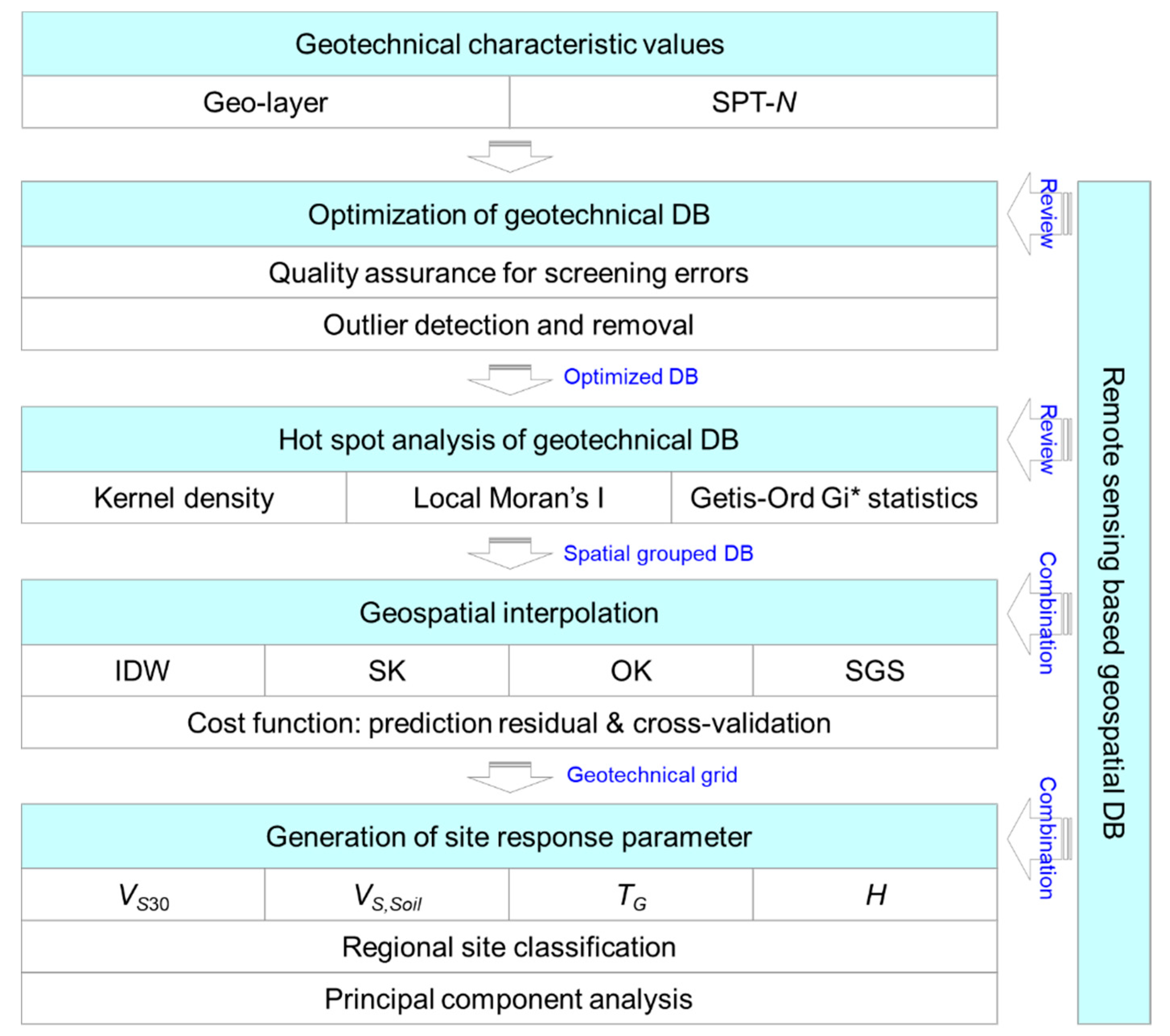
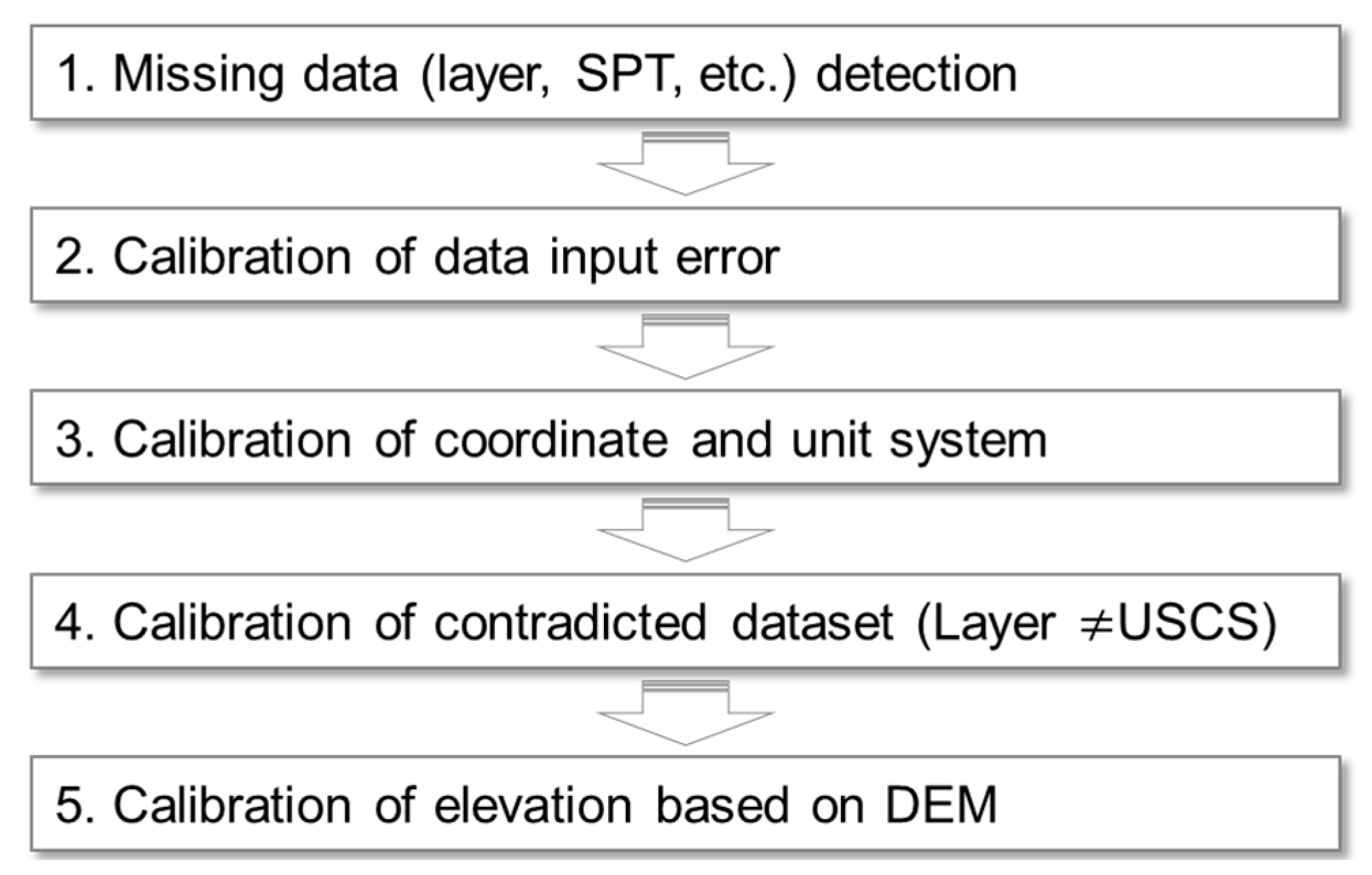
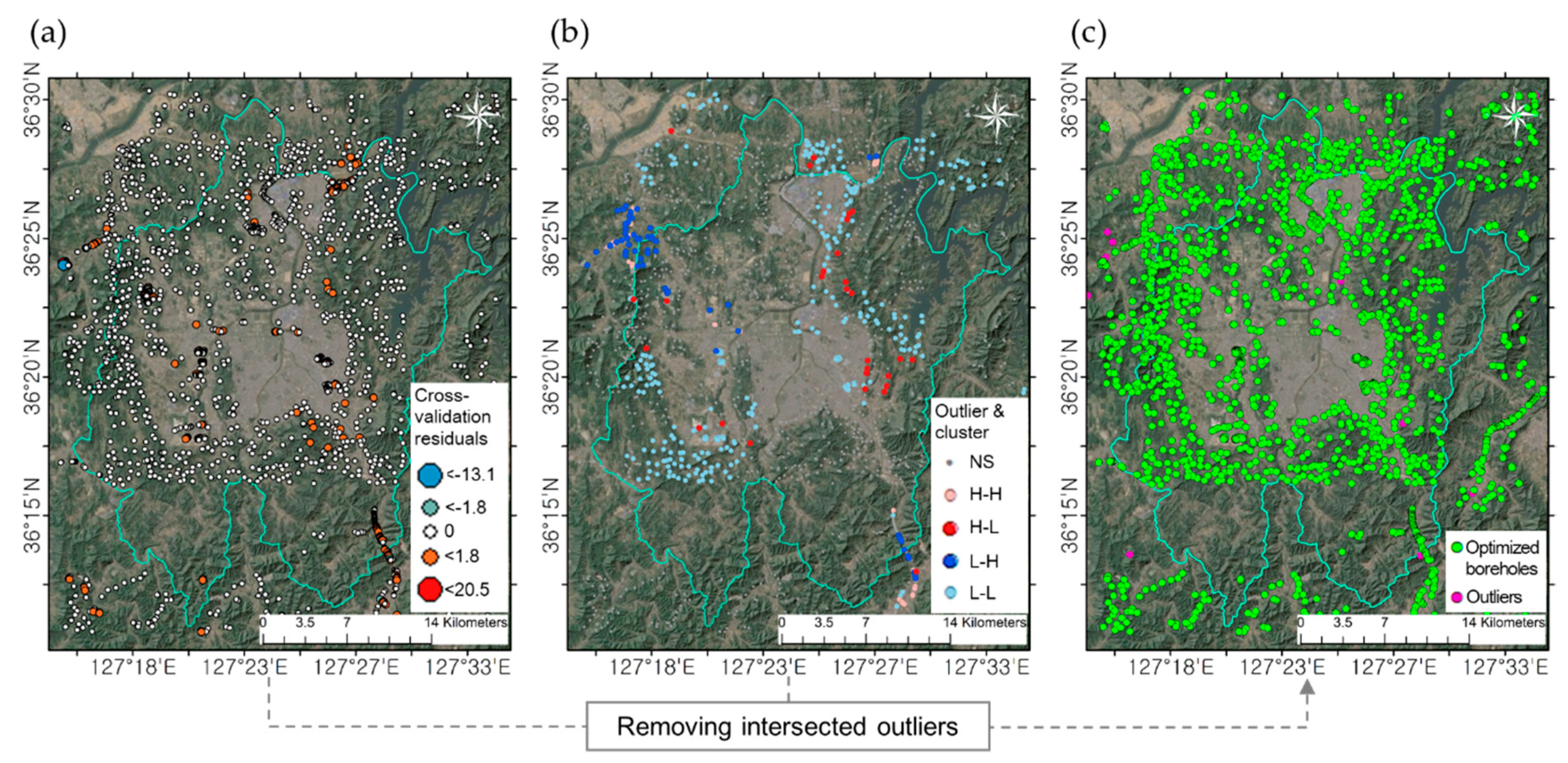
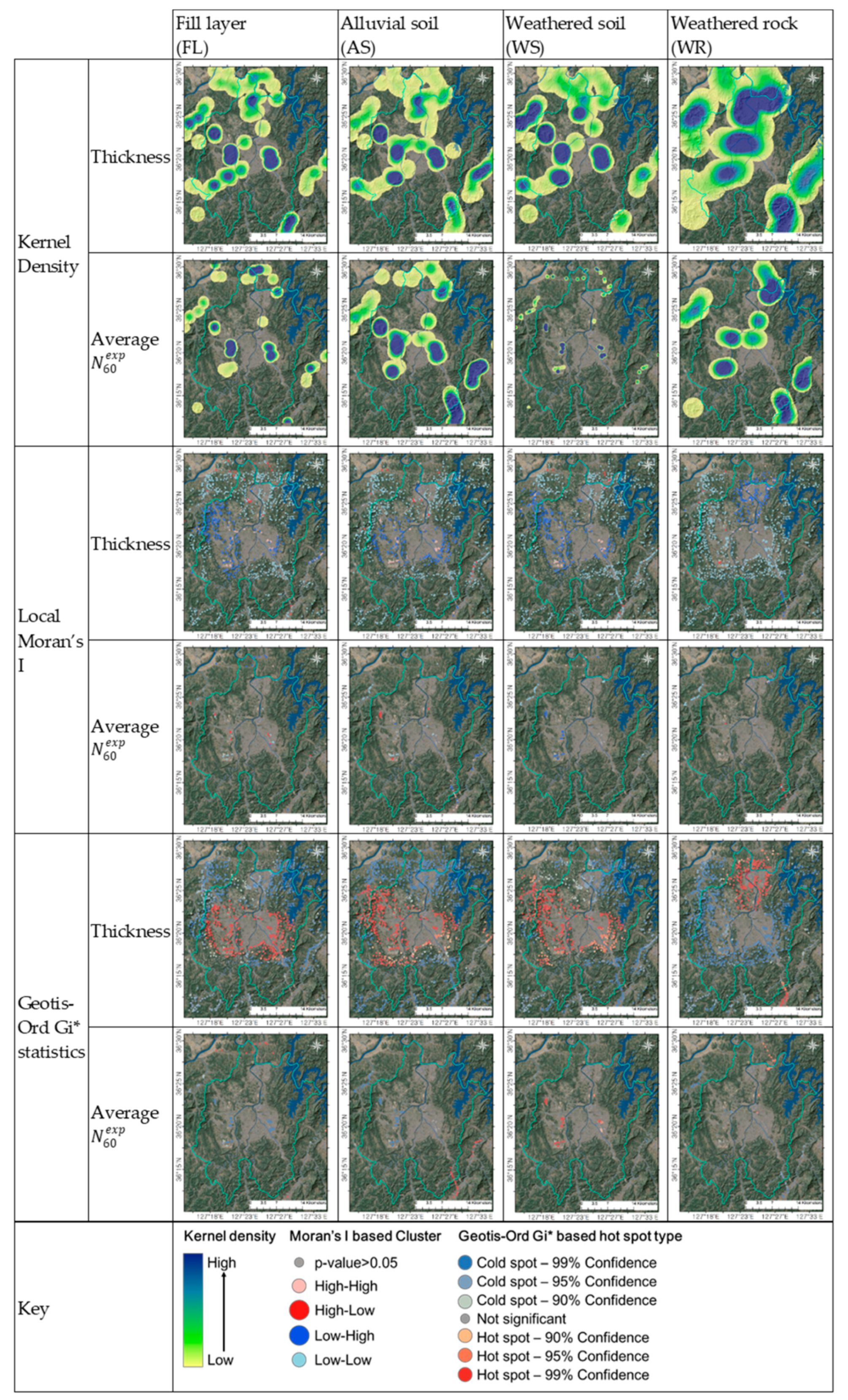


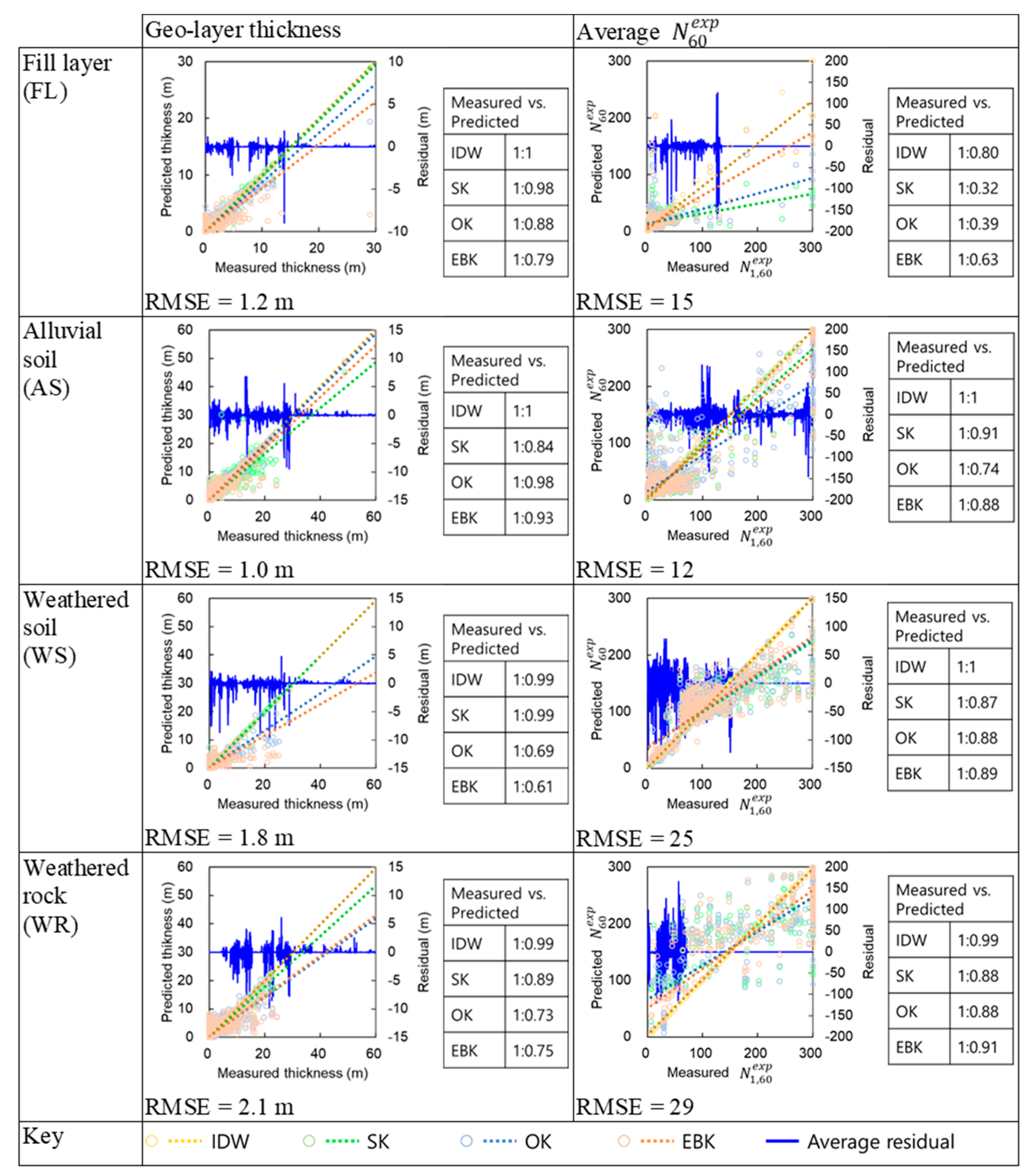
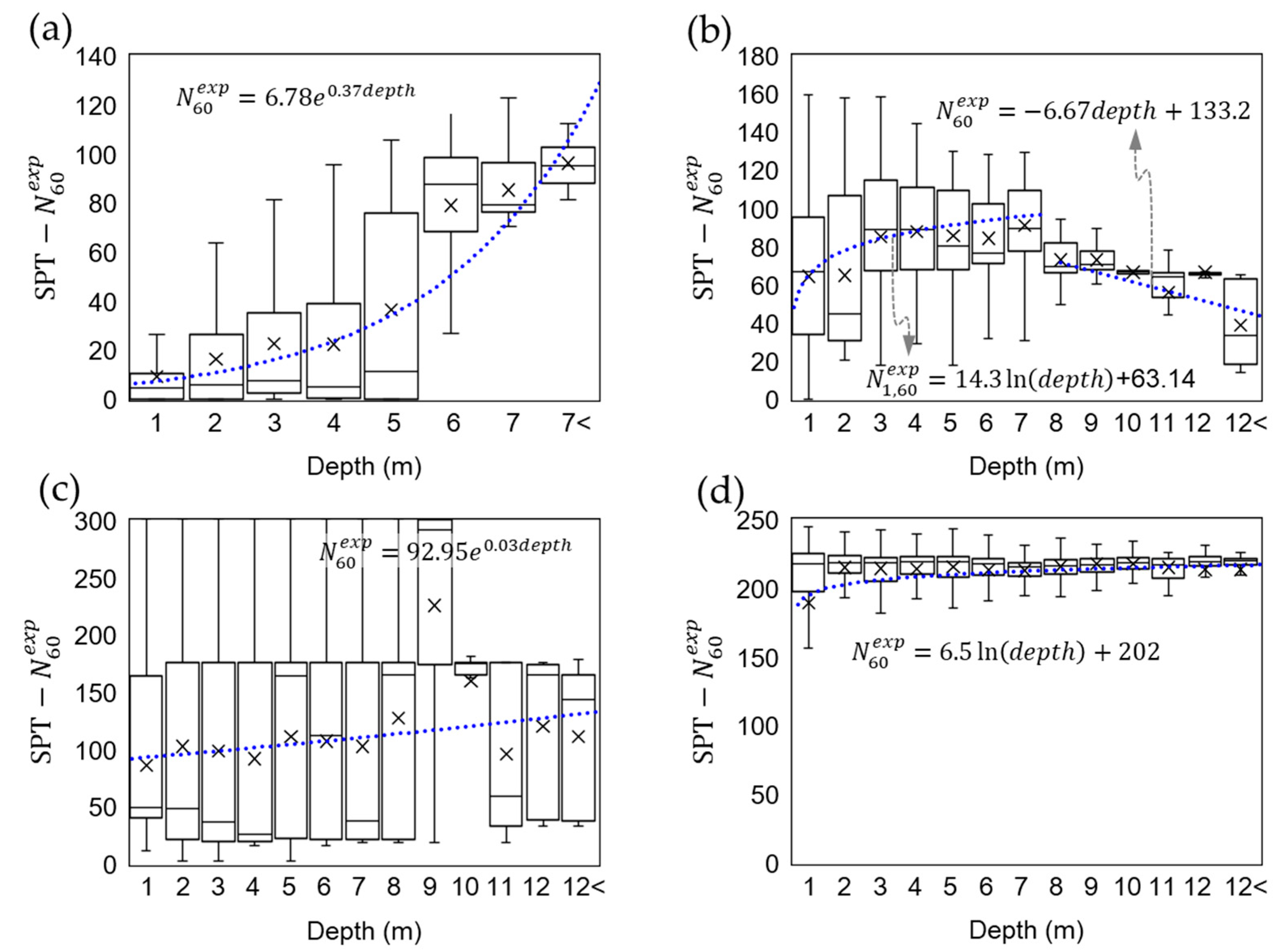


| Generic Description | Site Class | Geotechnical Criteria | Geo-Proxy-Based Criteria | |||||||
|---|---|---|---|---|---|---|---|---|---|---|
| H (m) | VS30 (m/s) | TG (s) | f0 (Hz) | Slope (%) | Elevation (m) | Lithology | ||||
| Geological era | Stratigraphy | |||||||||
| Rock | B | <6 | >760 | <0.06 | >16.67 | >5.6 | >80 | Paleozoic | Plutonic/metamorphic rocks | |
| Weathered Rock and Very Stiff Soil | C | C1 | <10 | >620 | <0.10 | >10.00 | >3.5 | >60 | Mesozoic | Cretaceous fine-grained sediments |
| C2 | <14 | >520 | <0.14 | >7.14 | >2.0 | >45 | Weathered crystalline rocks | |||
| Intermediate Stiff Soil | C3 | <20 | >440 | <0.20 | >5.00 | >1.1 | >31 | Oligocene–Cretaceous sedimentary rocks | ||
| C4 | <29 | >360 | <0.29 | >3.45 | >0.62 | >22 | Oligocene coarse-grained younger material | |||
| Deep Stiff Soil | D | D1 | <38 | >320 | <0.38 | >2.63 | >0.23 | >18 | Cenozoic | Miocene fine-grained sediments |
| D2 | <46 | >280 | <0.46 | >2.17 | >0.08 | >14 | Coarse younger alluvium | |||
| D3 | <54 | >240 | <0.54 | >1.85 | >0.023 | >11 | Holocene alluvium | |||
| D4 | <62 | >180 | <0.62 | >1.61 | >0.006 | >9 | Fine-grained alluvial/estuarine deposits | |||
| Deep Soft Soil | E | ≥62 | ≤180 | ≥0.62 | ≤1.61 | ≤0.006 | ≤9 | - | Inter-tidal mud | |
| Site Class | Site Description | Parameters for Classification | |
|---|---|---|---|
| Bedrock 1 Depth, H (m) | VS,Soil (m/s) | ||
| S1 | Rock | H < 1 | - |
| S2 S3 | Shallow and stiff soil Shallow and soft soil | 1 ≤ H ≤ 20 | ≥260 m/s |
| <260 m/s | |||
| S4 | Deep and stiff soil | 20 < H | ≥180 m/s |
| S5 | Deep and soft soil | <180 m/s | |
| S6 | Special soil requiring site-specific evaluation | ||
| Component | Initial Eigen Value | Loading of Parameters | Percent of Eigen Value | Coefficient of Correlations | ||
|---|---|---|---|---|---|---|
| VS30 | TG | H | ||||
| Combination #1: VS30, TG | ||||||
| PC1 | 1.34 | 0.51 | 0.05 | - | 87.47 | 0.96 |
| PC2 | 0.19 | 0.25 | −0.12 | - | 10.53 | 0.61 |
| Combination #2: VS30, H | ||||||
| PC1 | 1.20 | 0.66 | - | 0.38 | 76.17 | 0.94 |
| PC2 | 0.37 | 0.16 | - | 0.75 | 11.83 | 0.11 |
| Combination #3: VS30, H, TG | ||||||
| PC1 | 1.36 | 0.75 | −0.07 | −0.16 | 70.95 | 0.94 |
| PC2 | 0.43 | 0.01 | 0.15 | −0.25 | 22.25 | 0.61 |
| PC3 | 0.13 | 0.25 | −0.19 | −0.04 | 6.80 | 0.44 |
Publisher’s Note: MDPI stays neutral with regard to jurisdictional claims in published maps and institutional affiliations. |
© 2020 by the authors. Licensee MDPI, Basel, Switzerland. This article is an open access article distributed under the terms and conditions of the Creative Commons Attribution (CC BY) license (http://creativecommons.org/licenses/by/4.0/).
Share and Cite
Kim, H.-S.; Sun, C.-G.; Kim, M.; Cho, H.-I.; Lee, M.-G. GIS-Based Optimum Geospatial Characterization for Seismic Site Effect Assessment in an Inland Urban Area, South Korea. Appl. Sci. 2020, 10, 7443. https://doi.org/10.3390/app10217443
Kim H-S, Sun C-G, Kim M, Cho H-I, Lee M-G. GIS-Based Optimum Geospatial Characterization for Seismic Site Effect Assessment in an Inland Urban Area, South Korea. Applied Sciences. 2020; 10(21):7443. https://doi.org/10.3390/app10217443
Chicago/Turabian StyleKim, Han-Saem, Chang-Guk Sun, Mingi Kim, Hyung-Ik Cho, and Moon-Gyo Lee. 2020. "GIS-Based Optimum Geospatial Characterization for Seismic Site Effect Assessment in an Inland Urban Area, South Korea" Applied Sciences 10, no. 21: 7443. https://doi.org/10.3390/app10217443





